Flow Simulation and the 75 Dollar Question
Is it worth the extra 75 dollars for a long tube header versus a short tube?
Let’s start answering this by examining how an exhaust header works, and why you would want one. Headers are one of the easiest bolt-on accessories you can use to improve an engine’s performance. The goal of headers is to make it easier for the engine to push exhaust gases out of the cylinders.
To further understand why the exhaust manifold has an impact on performance let’s review the combustion cycle of a gasoline engine.
- The intake stroke – Starts with the piston at the top of the cylinder. As the piston moves downward the intake valve opens allowing the air fuel mixture to enter the cylinder.
- The compression stroke – Moves the piston back up to compress this air fuel mixture, causing the ignition of the air fuel mixture to be more powerful.
- The combustion stroke – When the piston reaches the top of the cylinder, the spark plug emits a spark to ignite the gasoline. The gasoline charge in the cylinder explodes, driving the piston down.
- The exhaust stroke – Once the piston hits the bottom of its stroke, the exhaust valve opens and the exhaust leaves the cylinder to go out the header.
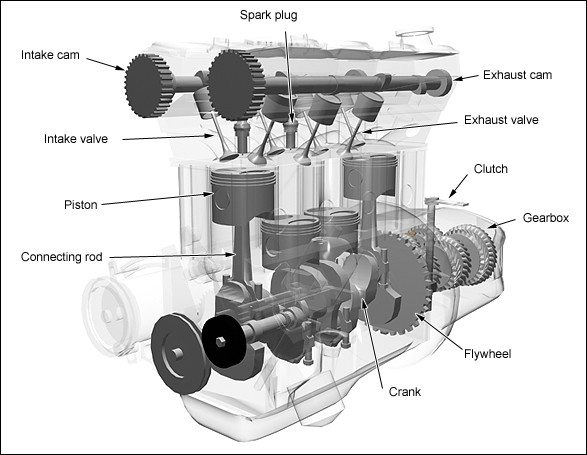
During the exhaust stroke, back pressure robs the engine of power. The exhaust valves open at the beginning of the exhaust stroke, and then the piston pushes the exhaust gases out of the cylinder. The more resistance there is to the piston expelling the exhaust gases, the greater the power loss.
Once the exhaust gases exit the cylinder they end up in the exhaust manifold. In a four-cylinder engine, all cylinders utilize the same manifold. From the manifold, the exhaust gases flow into one pipe toward the catalytic converter and the muffler. The idea behind an exhaust header is to eliminate the manifold’s back pressure. Instead of a common manifold that all of the cylinders share, each cylinder gets its own exhaust pipe. Old hot-rodder intuition, gut feel, and experimentation lead to each pipe being the same length, and using a two into one set up. Two into one specifies that the pipe leading from two cylinders merge into one. In the case of a four cylinder, pipes from cylinders 1 and 2 lead to one pipe, and pipes from cylinders 3 and 4 lead to one pipe. Those two pipes then merge again into the collector. The two into one method “smoothes” the flow through the pipe causing less turbulence when the flow fields merge. These pipes come together in a larger pipe called the collector. By making them the same length, it guarantees that each cylinder’s exhaust gases arrive in the collector spaced out equally so there is no back pressure generated by the cylinders sharing the collector. Basically Header=Power, and we all want more power.
The 75 dollar question arose from my sister. She is considering replacing her stock exhaust manifold with an after-market header, and was wondering what was the best “bang for the buck”. After researching the topic extensively we found that across all the after-market brands the designs seemed to be the same regarding pipe routing, materials, etc. So the main question came down to should she buy the “short tube” or “long tube” header?
Both the “long tube” and “short tube” headers have equal length pipes from the engine block to the collector. Both ran a two into one method. The long tube header however claims that since it is longer by design there would be less back pressure due to a smoother flow. The differentiator was about 75 dollars, and the fact that the “long tube” header would need the catalytic converter to be moved and remounted by a muffler shop. The “short tube” header is a direct bolt in.
I couldn’t resist turning to SOLIDWORKS Flow Simulation to solve this question.
We purchased the long and short tube headers, and removed the stock manifold to be able to accurately take measurements from them. The models are close but not exact without a reverse engineering tool such as a scanner or arm.
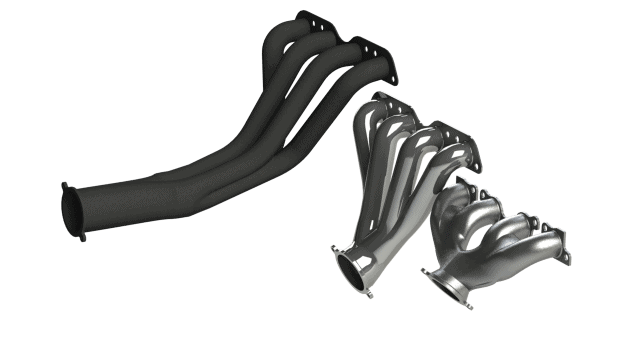
After the models were completed the next step became the boundary conditions. I was able to find a good reference guide located on line from www.donaldsonexhaust.com. Given the engine Horsepower, cubic inch displacement, and operating RPM I was able to determine Intake airflow, and exhaust gas flow in CFM.
This calculated the exhaust gas CFM to be 520.00 CFM, or 130.0 CFM per port. Please see the hand calculations below.
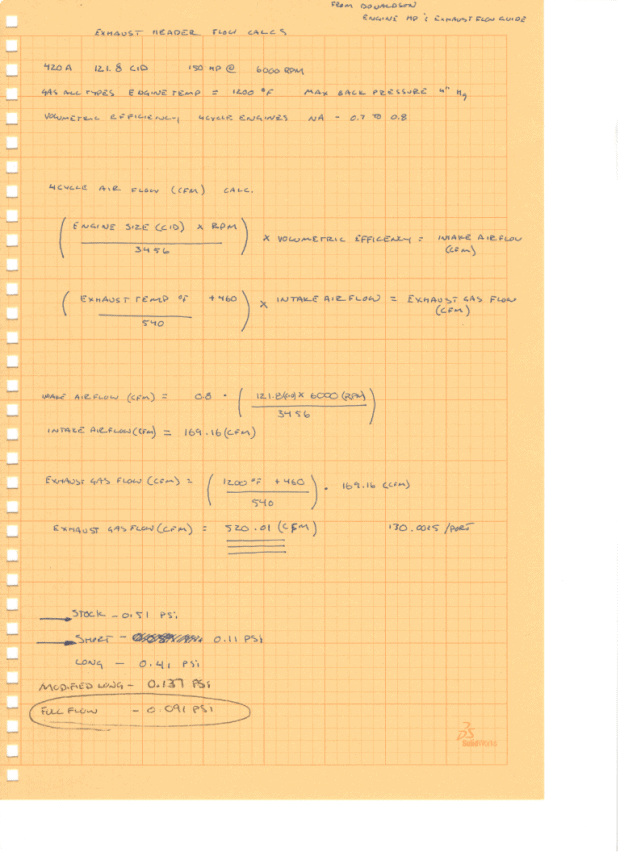
Knowing the CFM of the exhaust leaving the cylinder allows us to compare pressure drop from the inlet to outlet across the three manifold models. The stock exhaust will be the base line for comparison.
Model Set Up:
Inlet Condition: 130 CFM per inlet port
Outlet Condition: Environmental Pressure
Surface Goals: Each Inlet Goal – Static Pressure / Mass Flow Rate
Outlet Goal – Static Pressure / Mass Flow Rate

Results:
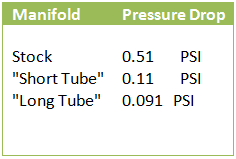
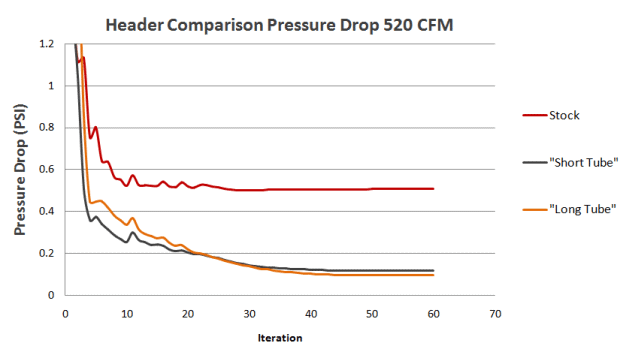
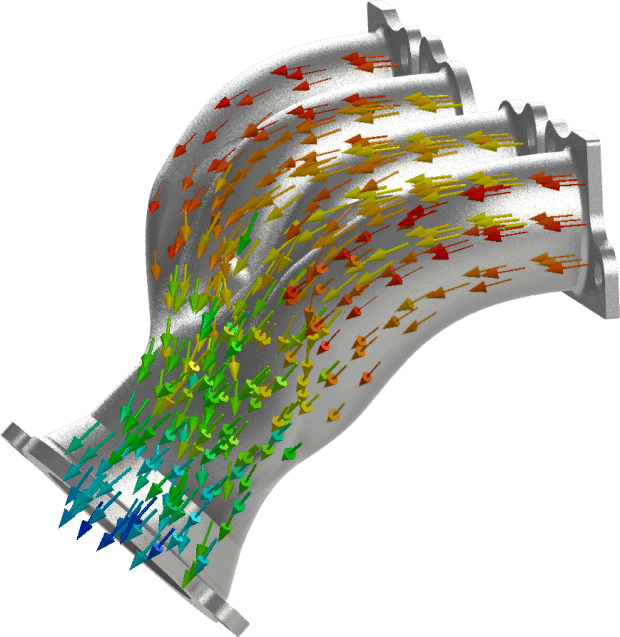
Stock Flow Path

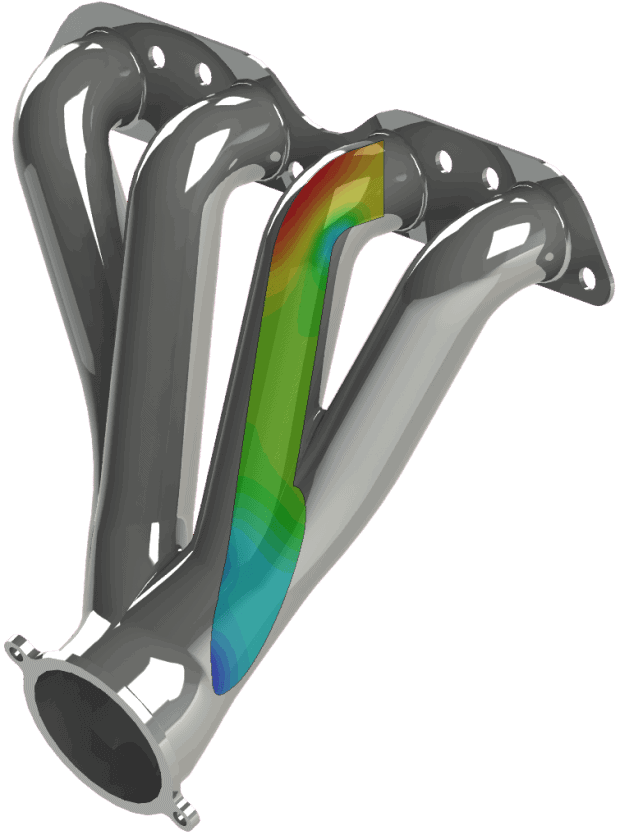
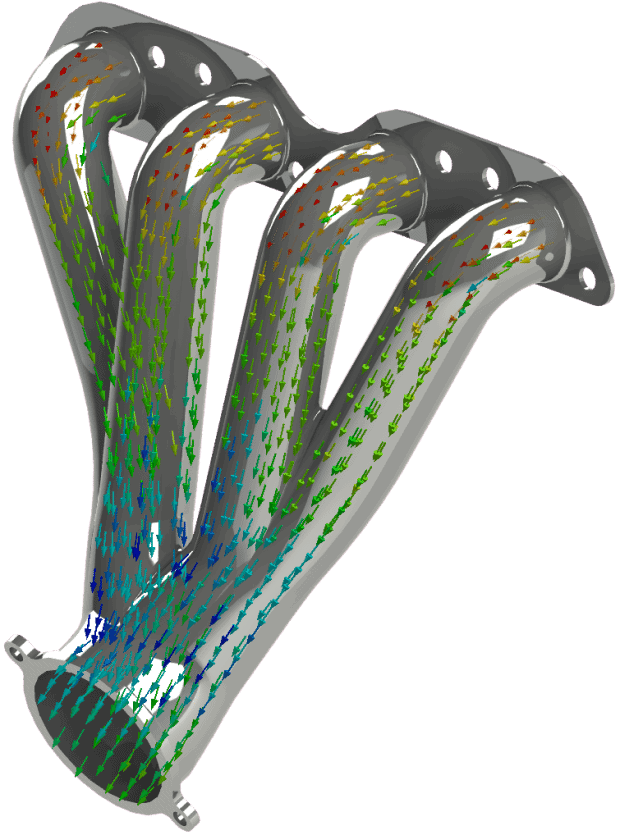


Summary:
The “short tube” header is hands down the best value. Both after-market headers showed a drastic decrease in pressure drop over the stock manifold however, the “long tube” header only had an edge over the “short tube” pressure by 0.019 PSI. As a bonus the “short tube is a direct bolt in, not requiring the existing catalytic converter to be moved. As Engineers we are always worried about time and money, and are often faced with a decision regarding these two factors. From my engineering background and proof provided by flow I recommended the “short tube” header.

 Blog
Blog